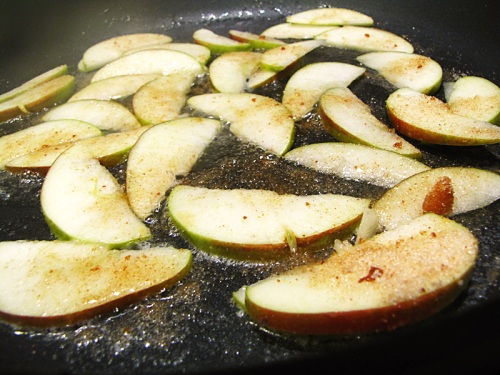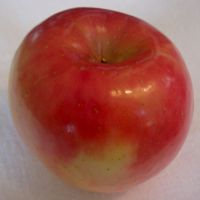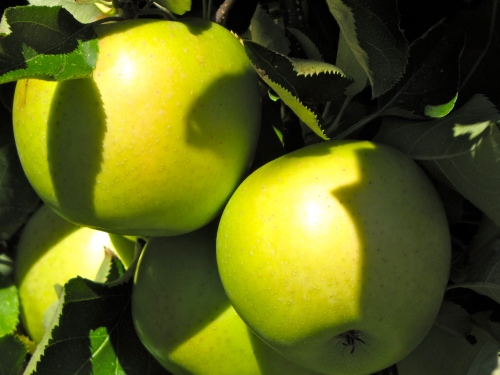ONE OF THE BEST THINGS about apples is their versatility. They can be served at any meal, in any course, cooked or uncooked, in combination with countless other foods. Apples are the perfect snack, too: sweet but healthy, easy to eat and carry in a pocket or hold in your hand.
Apples can be both sweet and tart, and their flavor and texture change when cooked. As a result, they can be combined to great effect with foods as disparate as cheddar cheese and raisins, eggs and pork, sugar and mayonnaise.
There’s no bad time, or way, to eat an apple. One place to test out this assertion is with sandwiches. There are all kinds of variations that include the crunch and flavor of apple with a favorite ingredient of choice. One simple sandwich is to replace the jelly in a PBJ with slices of fresh apple, such as McIntosh or Empire. Add a handful of dried cranberries or a drizzle of honey or maple syrup for a twist.
The other day Chris Weeks of Hatfield, Massachusetts, opened a can of tuna fish, and when he went to the fridge looking for mayo, he couldn’t find any. Instead he found a jar of applesauce, and stirred it into the tuna, adding a few fresh Cortland chunks. The result was decidedly different, but pleasing.
A day later he found a Fuji and tuna sandwich in the deli at a local grocery. It included lettuce, mayo, and tomato, but otherwise seemed identical to his ad lib.
Chris keeps experimenting, and has developed a great new variation on grilled cheese. We include it here with another favorite of ours, an open-faced broiled sandwich that is easy to make. It admirably demonstrates how apples can combine with unusual ingredients to take the ordinary to new culinary heights.
Apple Pie Grilled Cheese
THIS UNIQUE SPIN on a pair of classic comfort foods combines the warmth of a New England apple pie — complete with Cheddar cheese! — with the youthful exuberance of French toast. The result is a sweet and savory grilled cheese bursting with warm, gooey New England apples and sharp Cheddar cheese. There is no shame in using a fork and knife on this one!
Filling:
1 New England pie apple, such as Cortland or McIntosh
1 T butter
Bread:
4 slices whole wheat bread
1 egg
1 T milk
1 T cinnamon-sugar
Extra-sharp Cheddar cheese, sliced
Core and thinly slice apple. In skillet, sauté apples in butter over medium heat until medium-soft, about 2 minutes. Remove from skillet, sprinkle with 1 T cinnamon-sugar, and set aside.
In shallow bowl or pie plate, whip egg, milk, and 1 T cinnamon-sugar. Dunk bread into egg mixture and add to skillet, browning both sides over medium heat. Arrange cheese on all four pieces of the toast.
Allow cheese to melt slightly before placing apple filling on two pieces of the toast. Top with remaining pieces of toast, slice in half, and serve hot.
Yield: 2 sandwiches
Apple-Cheddar Sandwich
1 New England apple, sliced thinly
2 slices sourdough or other whole-grain bread
2 oz Cheddar cheese
2 thin onion slices
Whole-grain mustard
Spread mustard on bread; top with apples, onion, and cheese. Briefly broil until cheese is bubbly.
* * *
A GREAT LATE-SEASON sandwich apple is Spencer. It’s a relatively new (1959) cross between McIntosh and Red Delicious. Spencers are crisp, juicy, and sweet, but less so than a Delicious. Nearly solid red in color, they are an outstanding apple for both fresh eating and culinary use. You won’t find them everywhere, but they are worth the search.
A more readily available choice for sandwiches is Fuji. Popularized in Japan and Washington state, it is grown in New England, so look for your local variety.
Fuji is a medium to large apple, with orange-red skin. Its flesh is firm, crisp, and juicy. Fujis are excellent eating apples, and good dried in slices. They also keep well, maintaining their quality for up to a year refrigerated or several weeks left in a fruit bowl. Fujis ripen in late October.
Fuji was developed in Japan in 1939, but it was given its name in 1962. Named for Japan’s tallest and most sacred mountain, Fuji is a cross between a Ralls Janet, an heirloom variety from Virginia, and Red Delicious.









